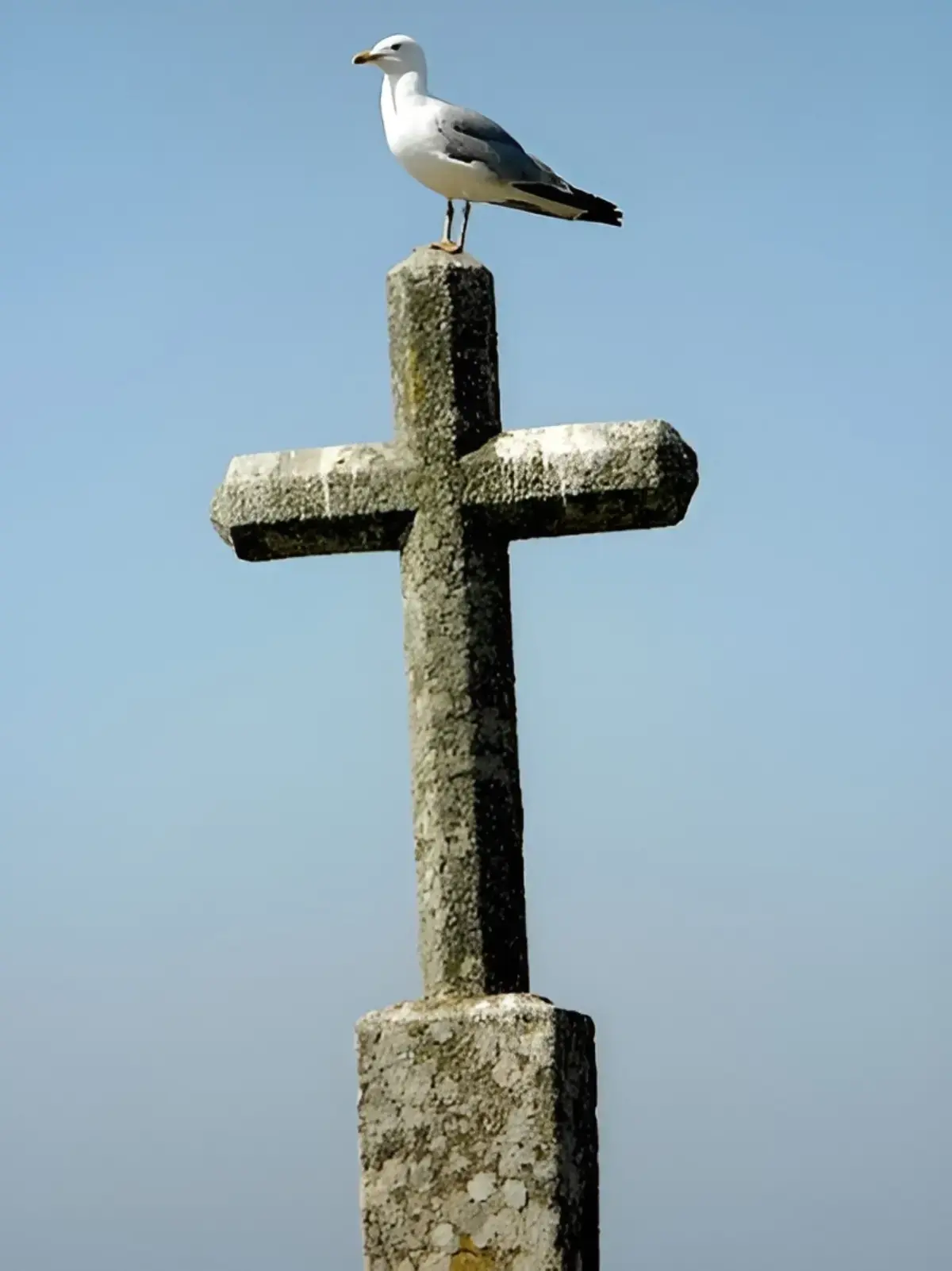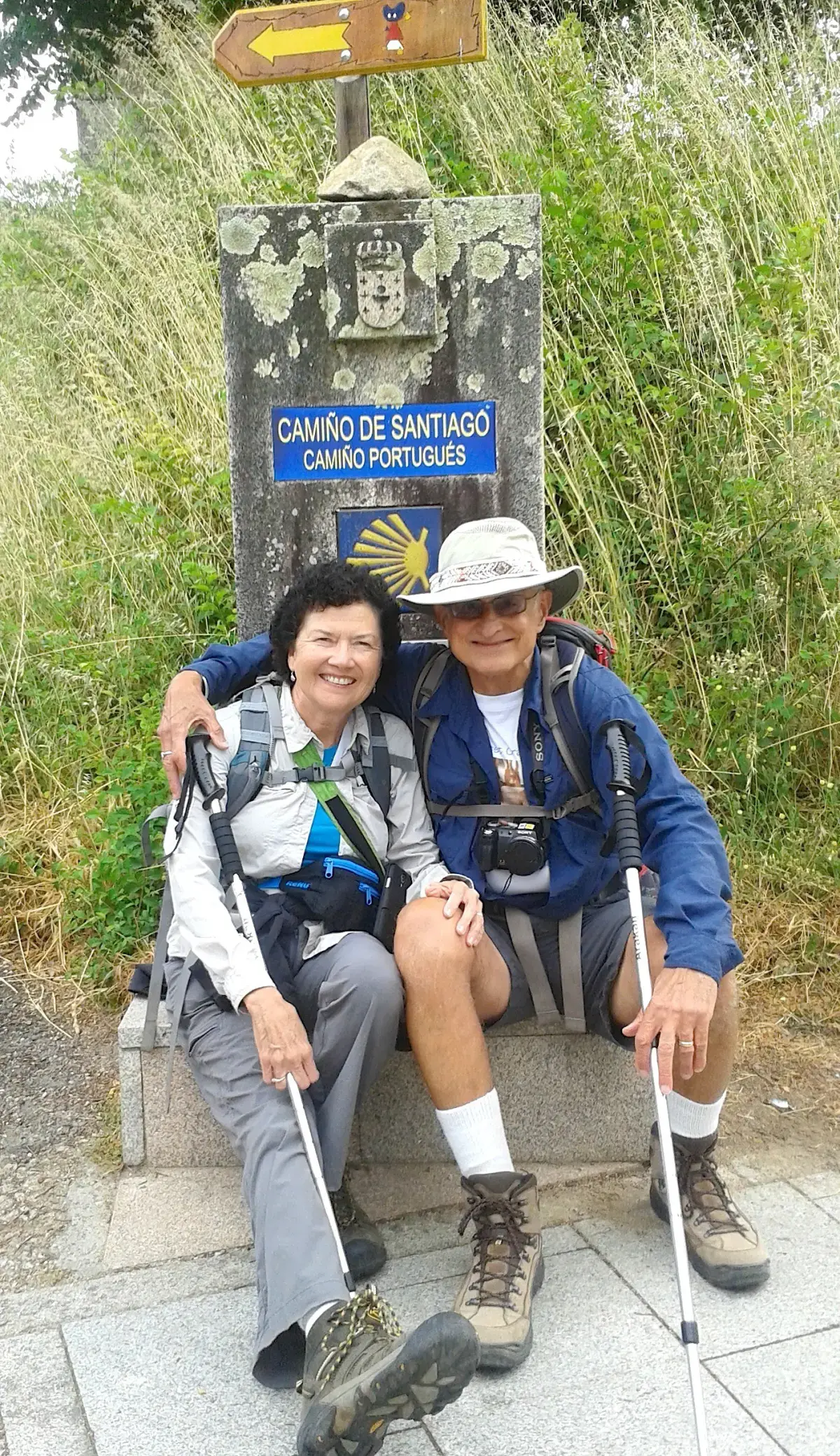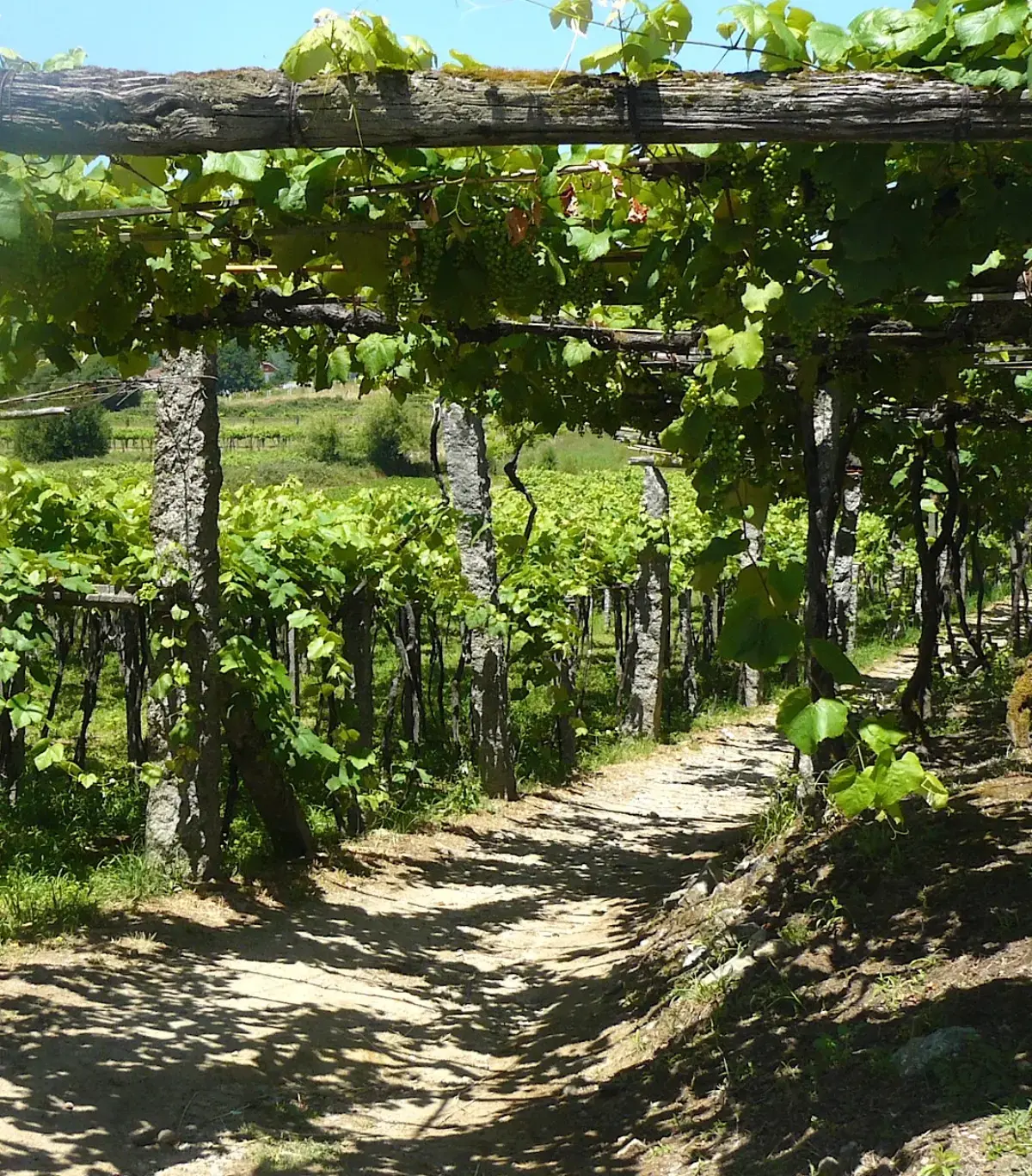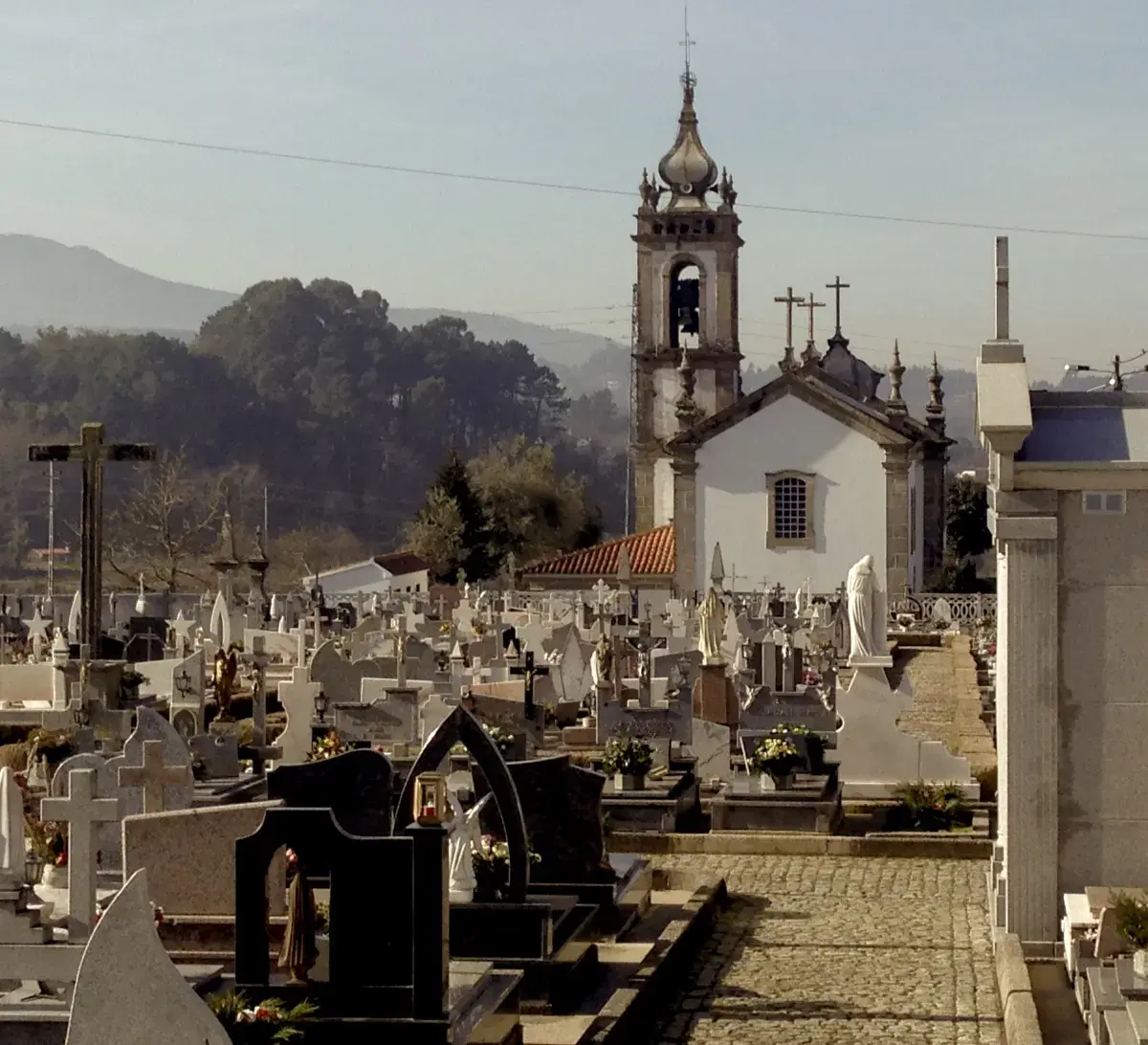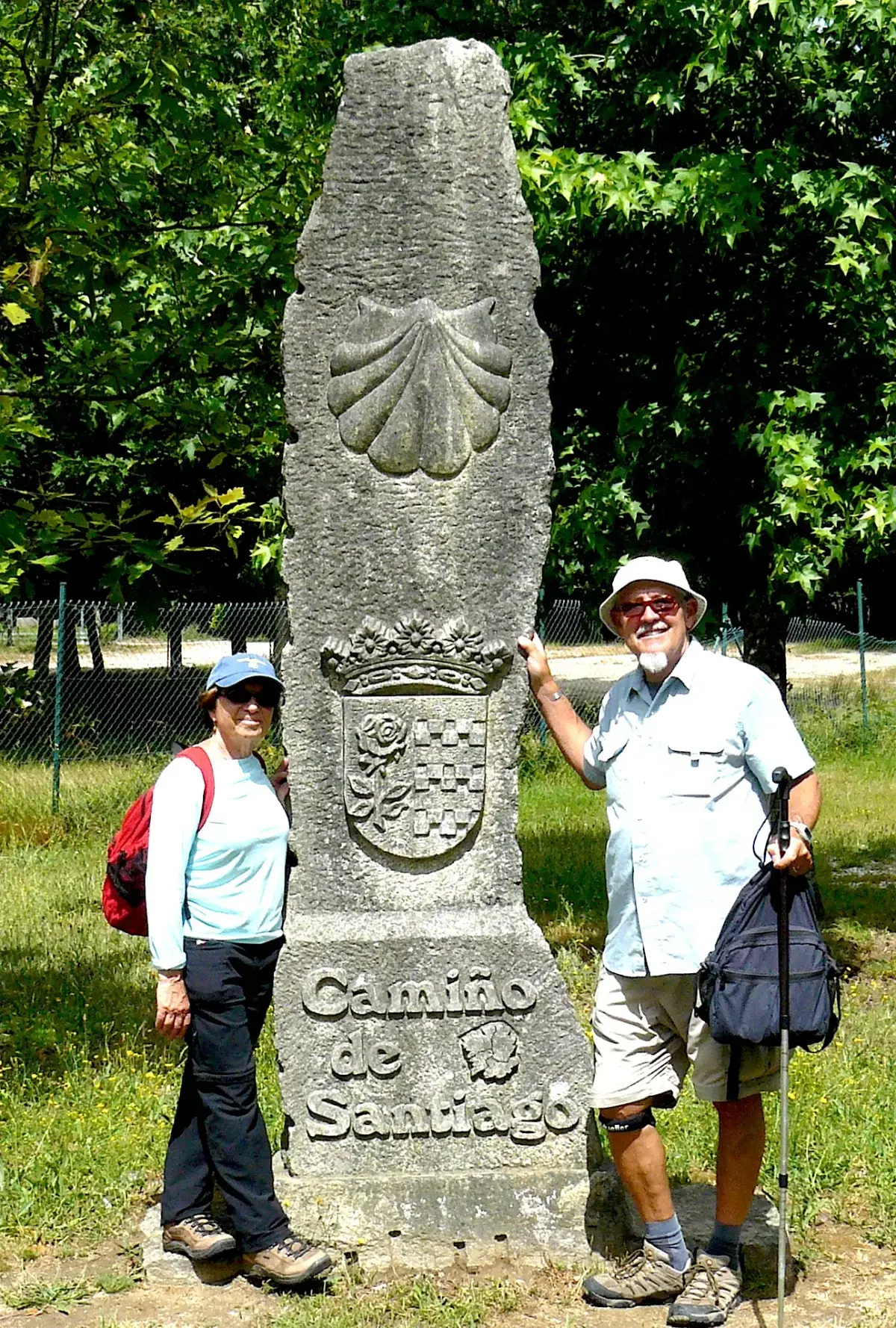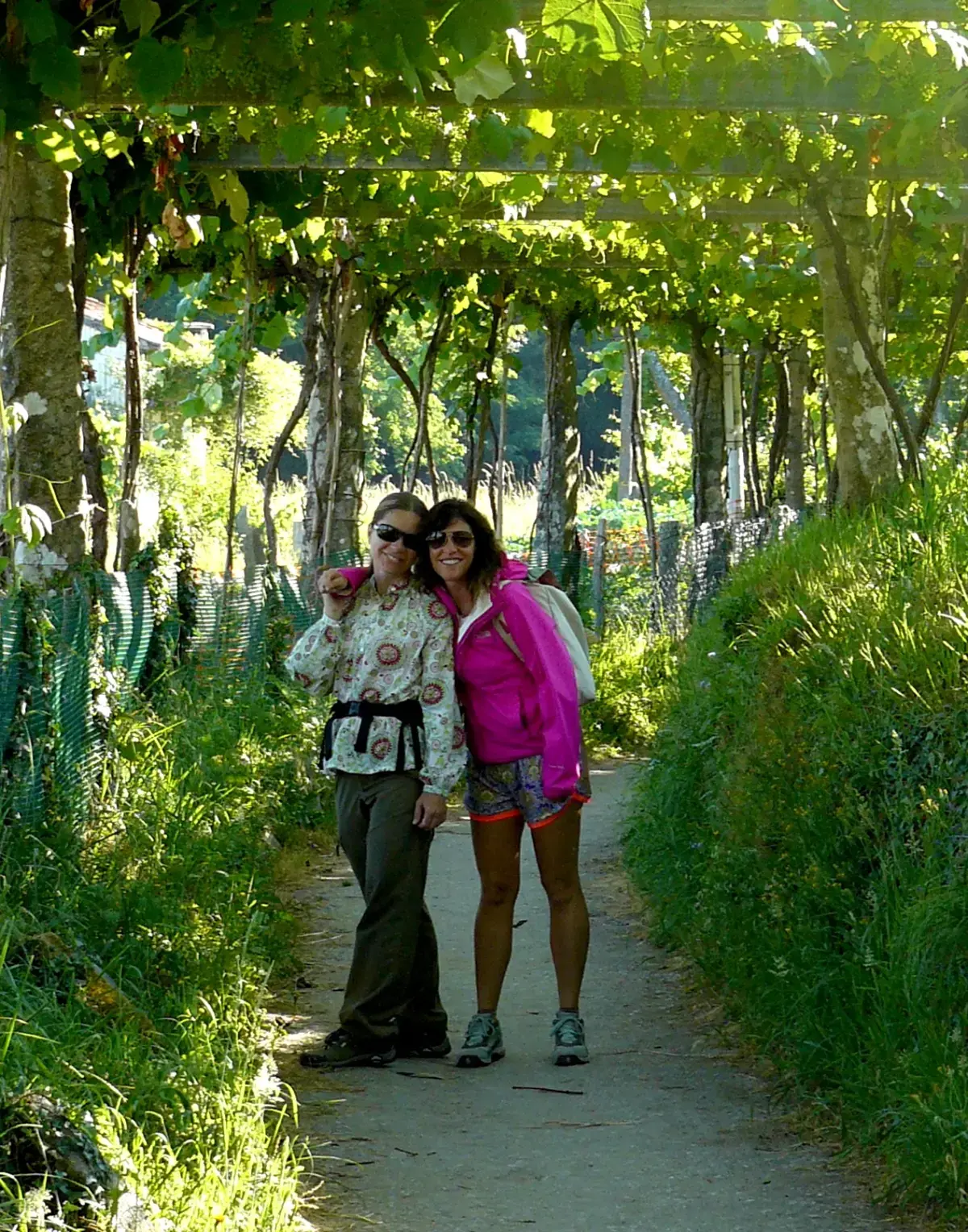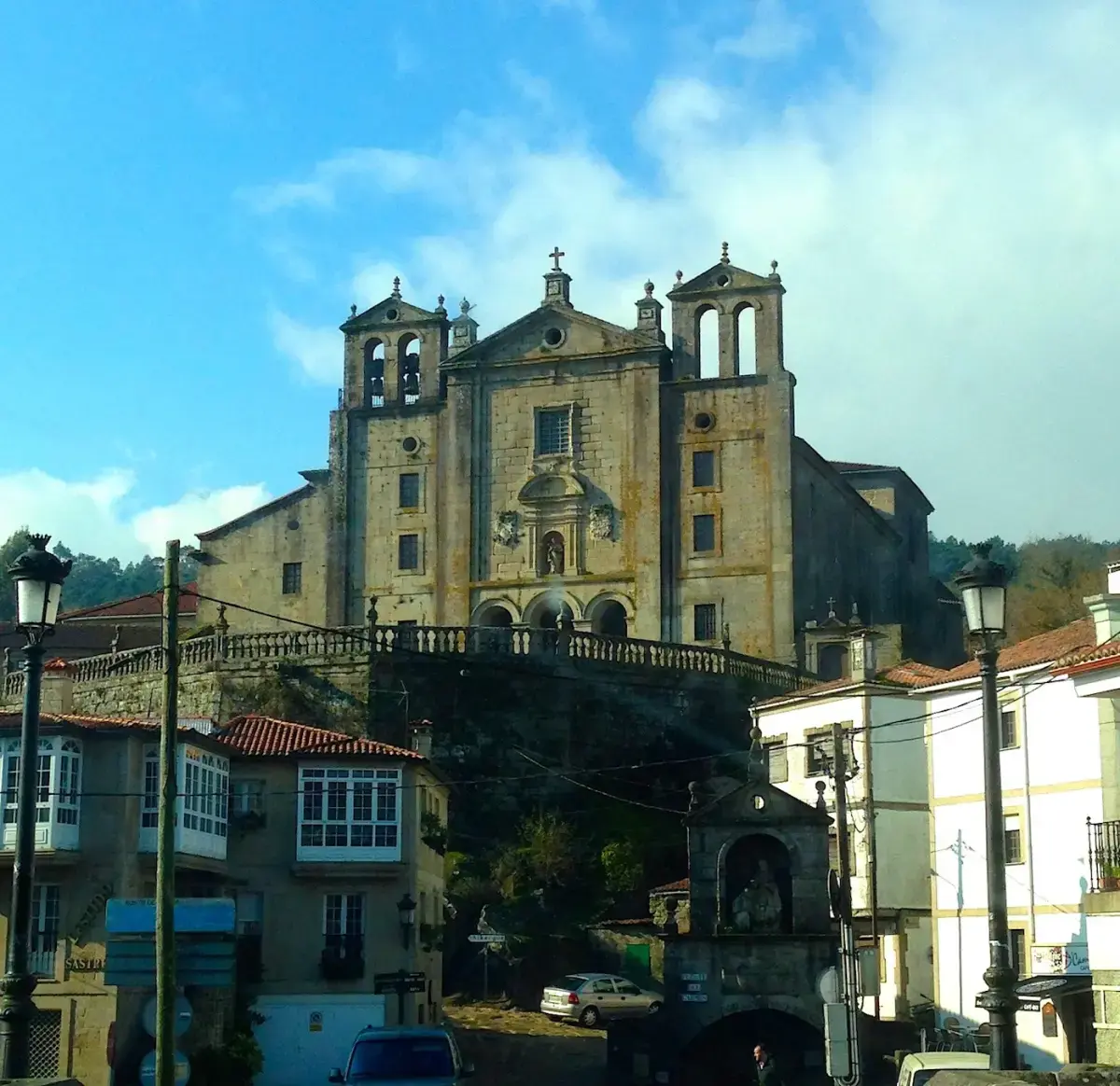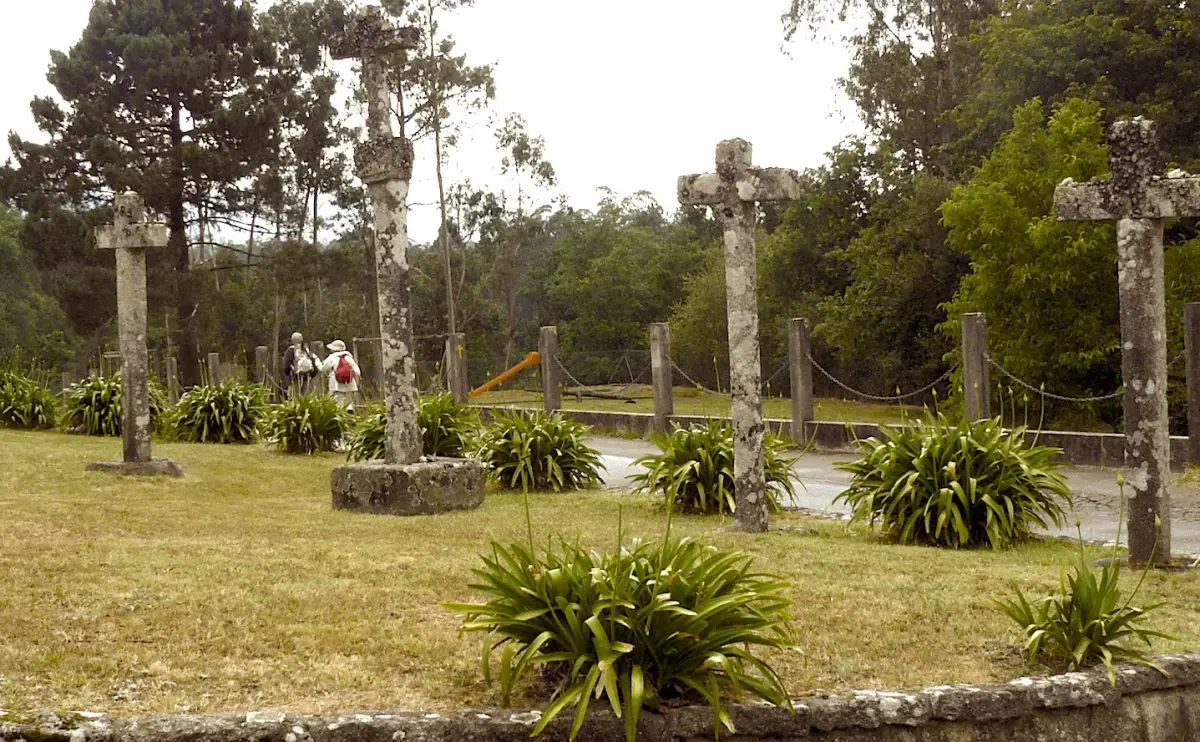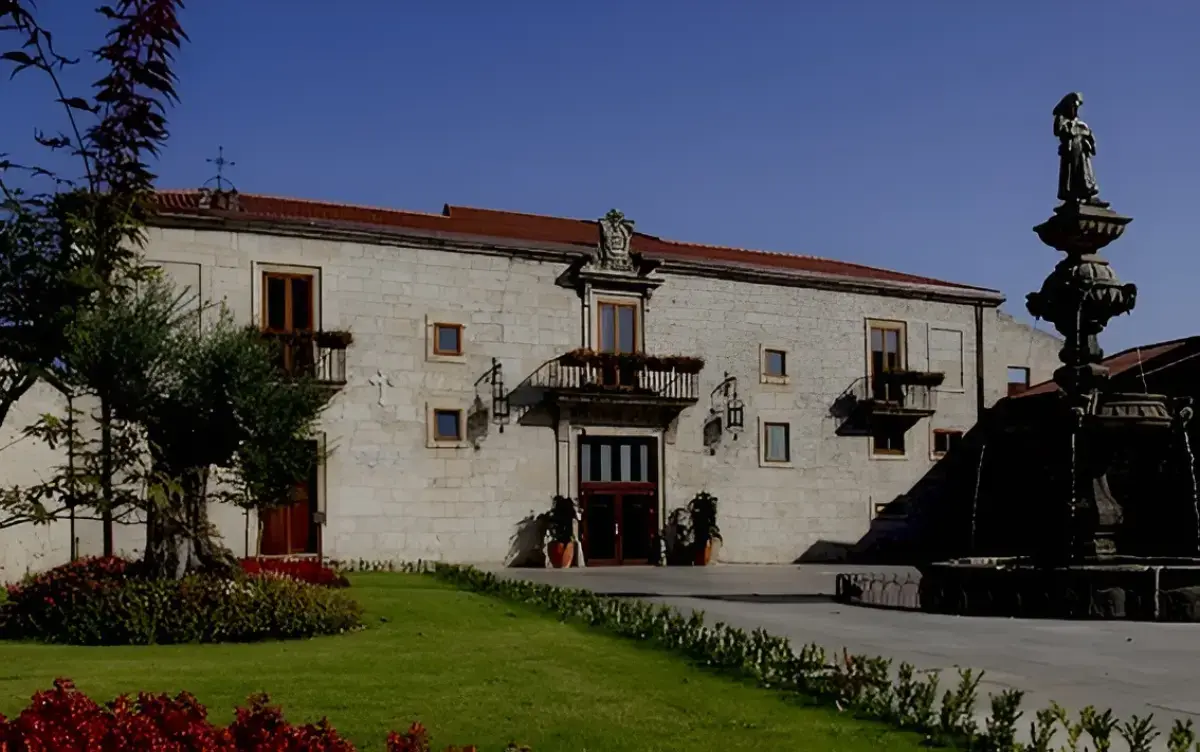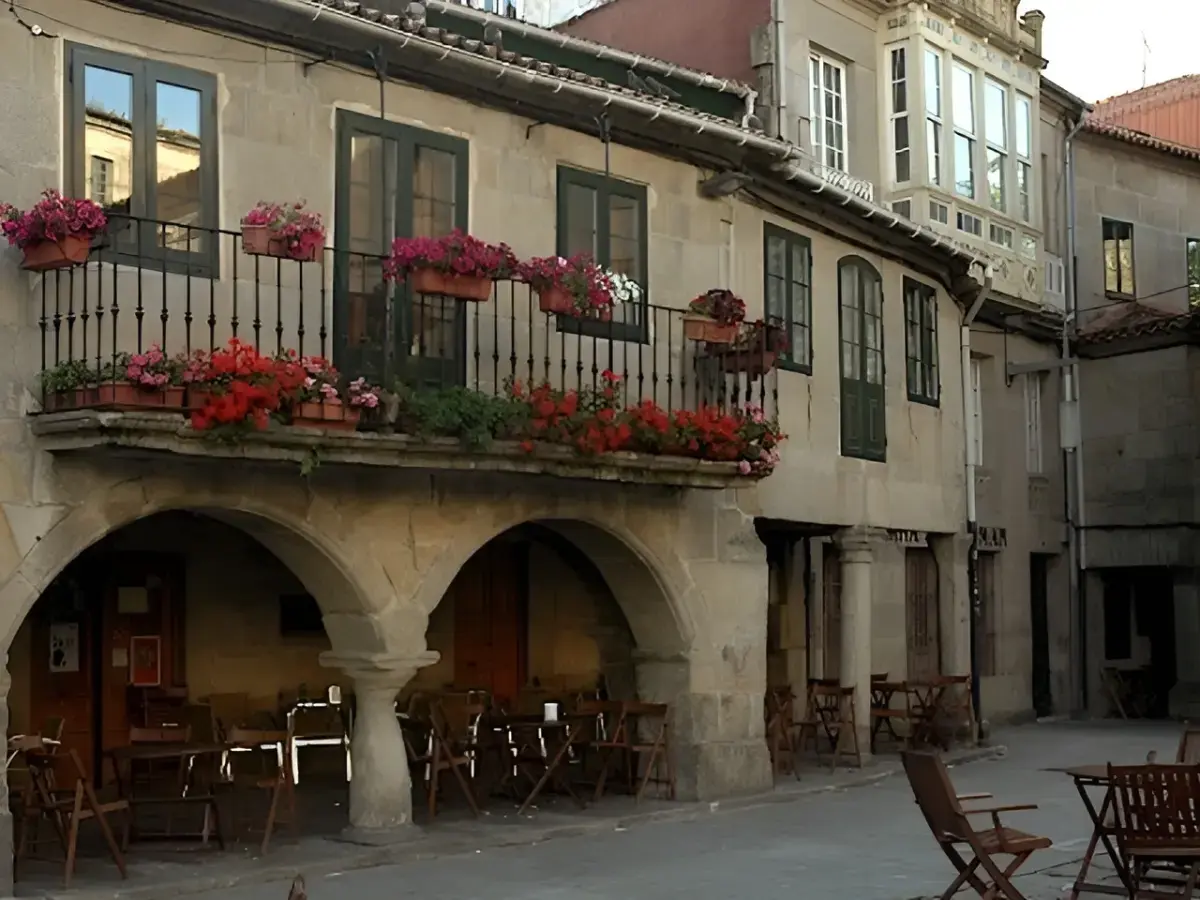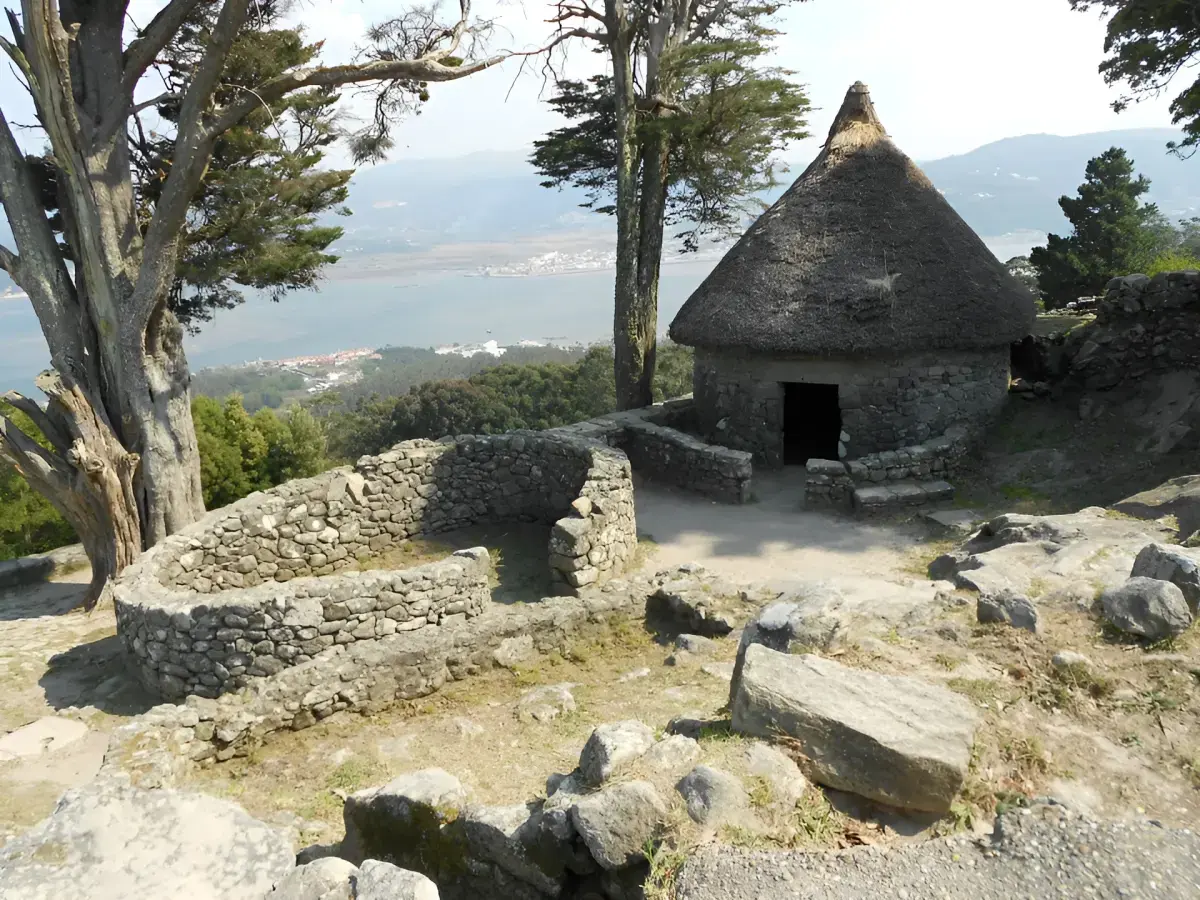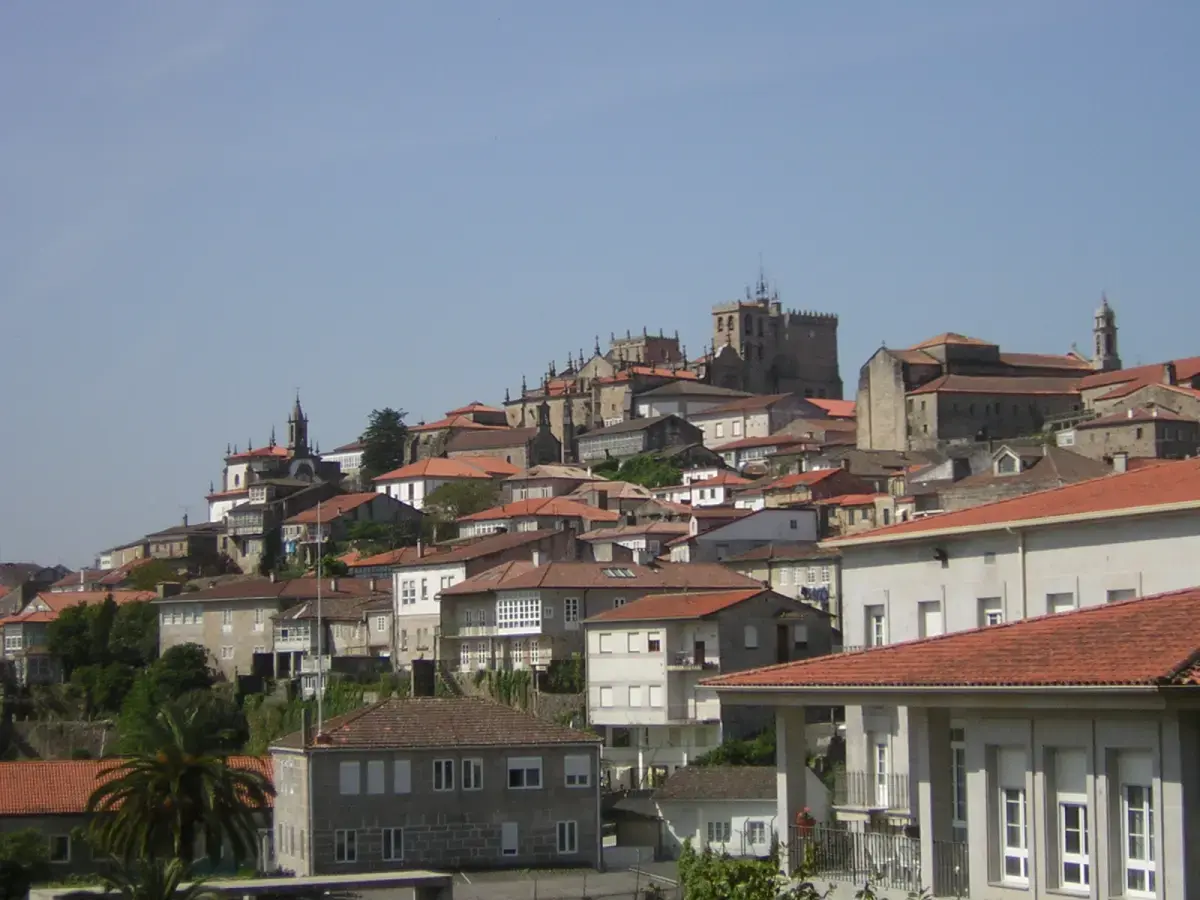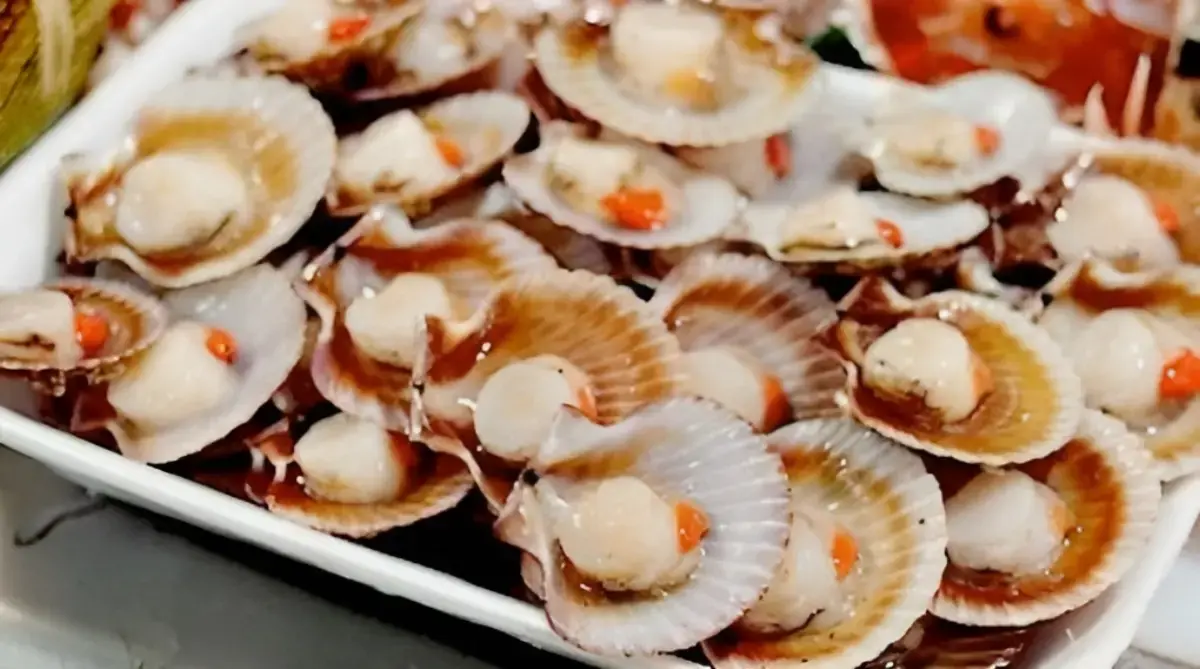
3000 EURO PER PERSON
Spanish Steps is excited to have brought the Portuguese Camino to our portfolio. The final 115 kilometers (71 miles) of this beautiful pilgrimage route begins at the of the border town of Valença do Minho in Portugal.
On foot, we cross the border from Portugal to Spain over the mighty River Miño. Our Camino is not only a legendary path to Santiago, but our footsteps will follow the La Via Romana XIX, a 2000 plus year old roman route used for communication throughout the Iberian Peninsula. The trail takes us through vineyards, kiwi plantations and woodlands interspersed with roman bridges, ruins and trail markers, all the while skirting the Rias Baixas ‘the coastal estuaries’. We will walk through the historic towns of Tui, Pontevedra, Caldas de Reis and most importantly, Padrón, where the legend of Saint James begins its story.
Step with us into this fascinating part of green Galicia and your Camino will allow you to receive the Compostela – the official certificate of completion for this epic journey. Full van support with healthy snacks will be provided by your guide. Daily maps and historical information will be given out every day.
All hotels, breakfasts, 6 dinners, with wine, van support w/ healthy snacks are included in the tour price.
Itinerary
Day 1: Vigo – Valenca – Tui – Baiona
At 9AM, your Spanish Steps guide will meet you at Hotel Ciudad de Vigo in the center of Vigo, a bustling port town in southern Galicia with its own airport. We suggest you spend the night in Vigo before the tour begins. Once you become acquainted with your guide and your new pilgrim companions, we will head southwards into Portugal where we will begin our pilgrimage.
Our first point of call is Valença, a walled town of Roman origins located on the left bank of the Miño River. From the Fortress we look down on the Spanish town of Tuí and the International Bridge which connects Portugal with Spain. Completed in 1878, under the direction of Gustave Eiffel, we can observe similarities in style to the Eiffel Tower in Paris. We will walk across this bridge, which also acts as the border between Portugal and Spain. Positioned in an elevated spot close to the Rio Miño, it offers beautiful views of the luscious river valley and back across the border to Valença. Simply wandering the cobblestone streets of the old city is worth its while, for it retains its historic atmosphere. It still has remains of the walled enclosures built for defense. Inside the city are historical sites of interest; most significantly is the 12th Century cathedral located in the heart of the medieval centre. It is a fantastic example of the wealth of Tuí at that time and of its architecture of Gothic and Romanesque style. From the Cathedral in Tuí.
After our visit here, we head west to the 1st Century Celtic ruins at Santa Tecla, positioned high above the Atlantic Ocean and the estuary of the River Miño. This archeological site pre-dates the Romans and the pilgrimage era.
This is just the beginning. We’ll drop down to A Guarda to satisfy our appetites before heading north along an incredibly dramatic Atlantic coastline. Before we reach Biaona, we’ll enjoy a pleasant walk of 8 kilometers to our hotel for the night. (Dinner included)
Day 2: Baiona – Vigo – Redondela
After breakfast, meet the group to depart for a scenic drive along the coast to Vigo, where you begin the last 100-kilometer of the Camino de Santiago. We begin our day at the Parish Church of the Immaculate Conception or as the locals call it “Los Picos” for its unusual shape. We’ll meander trails and country lanes through forests and villages with lovely views down to the busy estuary below. Take note of the rafts floating in the sea. These are called Bateas, Galician mussel and oyster farms. The largest quantity of fresh fish in Europe makes its way through the port of Vigo. At day’s end, we’ll gather at a café in Redondela to celebrate our first big day on the trail. (Breakfast & dinner included)
Day 3: Redondela to Pontevedra
Redondela is where we join the central Camino Portugues and befriend many other pilgrims on their way to Santiago. The Church of Santiago (12th century) will wish us a farewell as we make our way up and down to Arcade and to the high point of Alto de Canicouva eventually landing us in the historic city Pontevedra. (Breakfast & Dinner included)
Day 4: Pontevedra – Caldas de Rei
Leaving the old town of Pontevedra, keep a look out for the excavations of the foundations of the original Roman bridge and a replica Milário (roman milestone), just before crossing the 12th Century O Burgo bridge. Today is a peaceful day of gentle and isolated countryside following the route of the railway line with minimal services.
The forest paths, replete with eucalyptus and pine, are calming places to get into the zone of simply walking….nothing else. We pass by a notable number of cruceiros plus the 12th Century Santa Maria de Alba with its interesting statues and the small chapels of San Amaro and Santa Lucia.
After the village of San Amaro, there is an optional detour to Parque Natural de Ria Barosa to visit the waterfalls. This is particularly recommended if there have been heavy rains or if it is hot and sunny, as the viewing area offers shady picnic tables.
The end of the day brings you to Caldas de Reis, a town that is famed for its thermal waters. The Celts and Romans settled here for this reason and named it ‘Aquis Celenis’. Caldas de Reis has long since been a draw for people to come and ‘take the waters’ and it has always been especially important as a resting place for pilgrims to take advantage of the healing waters. So, join in with the tradition and soak your feet in the lavadero filled with hot water & quench your thirst at the cold spring, just across the Roman Bridge. We spend the night in this pretty spa town and dinner is on your own to explore one of the local restaurants. (23 kilometers – Breakfast included. Dinner on your own.)
Day 5 – Caldas de Reis – Padrón
A short and peaceful day of walking with a few hills and delightful forest tracks of eucalyptus and pine along with the ubiquitous gorse and broom. The climb to O Pino is through pretty villages with sweeping views of the surrounding countryside and hills. We only pass four churches before Padrón, the most beautiful of which is the complex of Santa Marina de Caracedo, set amongst the fields on the edge of the village of Campo.
Arriving in Padrón is an important stage in your Camino, not just as it is the last town before Santiago, but due to its long association with the legend of Santiago. More is always made of his death, but it was here that the Apostle Saint James first preached on the rocks above the town and a miracle occurred; he made a spring appear using his staff. Of course, it was also here that the boat was moored that carried Santiago’s body from Palestine. The town takes its name from the ‘Pedrón’; stone that the boat was reputed to have been tied to. The original stands beneath the high alter in the neo-classical Church of Santiago alongside the canal.
The town is dominated by the Convent and Fountain of Carmen, both imposing and beautiful. Behind them, and above on the hill, is the Chapel of Santiaguiño and the Santiaguiño do Monte, a shrine formed of the rocks where Santiago first preached. A narrow pathway of 126 steps takes you there…..take the time and make the effort to go to this special place. Padrón is also famous for its little green peppers which are fried whole in olive oil and are highly addictive! Eating them is a gamble though as one in every five or six has a spicy kick….
We will drive ahead to our beautiful rural retreat where we sleep two nights. (18 kilometers – Breakfast and Dinner included)
Day 6: Padrón – Milladoiro
Today, we’ll begin our day by climbing up to Santiaguiño do Monte in Padrón to claim our ‘jubilee’. Upon return to Padrón, we take to the trail with a varied days walking of gentle terrain through the sleepy villages of Romeris, Rueiro, and Villar allowing our final, up-close glimpse into how the locals live and the simplicity of rural Galician life, before reaching the enormous Baroque sanctuary at A Escravitude. Here a climb begins through pine forest on alternating woodland tracks and country roads, with a short stretch of main road and more rolling hills as far as the beautiful village of Rua do Francos, nestled amongst enormous, ancient oak trees and home to one of the oldest wayside crosses in Galicia. More delightful oak, pine, and eucalyptus woodland routes await before we start our long climb to the modern suburb of Milladoiro, a satellite community of Santiago where we finish our day and shuttle back to our hotel for our penultimate night together. (19 kilometers – Breakfast and Dinner included)
Day 7: Milladoiro – Santiago de Compostela
We take to the Camino one last time today. Leaving behind the buildup of Milladoiro, we begin a gentle descent through a scattering of villages. Along the way we get a brief glimpse of our first views of Santiago de Compostela and its cathedral spires; our final destination. Eventually we arrive into ‘civilization’; we begin ascending our final few kilometers of busy sidewalk before finally, the time comes for the entrance into the medieval heart of this famed city. Our Camino walking journey ends at the steps of the cathedral today. We will gather for a celebratory dinner together. (7 kilometers – Breakfast and Dinner included)
Day 8 : Tour End – Buen Camino
After a leisurely breakfast, a local tour guide and historian will show us the main sights on a twohour guided walking tour of the city and the cathedral finishing in time to attend the Pilgrims Mass. (Breakfast included)
Location
FAQs
How many miles do we hike per day?
On this trip, the mileage varies from day to day, but we average around 18-19 kilometers. Our shortest day is 12.5 kilometers (8 miles) and the longest 23 kilometers (14.5 miles). Most pilgrims walking the trail independently walk 15 miles or 25 kilometers a day carrying a heavy pack. With Spanish Steps, we have the luxury of a fully supported van, which carries our baggage from hotel to hotel, and carries us the extra mile if one needs to jump in the van.
What kind of hotels do we use?
We use beautifully restored farmhouses known as Casa Rurales, and family run Pazos, Galician manor home and hotels. Most are located a little off route from the Portuguese Camino situated in small towns and villages, away from the large cities, so most day will involve a group transfer at the beginning and end of the day. We try to stay two nights in our hotels. All rooms have private bathrooms. The smaller inns have no phone or TV in the room.
Is there WIFI at our hotel?
Our hotels nearly always have free WIFI available although it is often just in the lobby/public areas. We generally stay at historical hotels, which often have thick walls, so WIFI rarely works in the rooms. Most bars and cafes enroute have free WIFI also.
How many meals are included?
All breakfasts and six dinners are included in the price of this tour. Our hotels will be happy to provide a vegetarian option should it be required. Lunches and one dinner are not included in the tour price, however, there are plenty of shops along the trail to purchase sandwich items and fruit, or plan to eat at one of the many cafes that cater to pilgrims. The van will be stocked with healthy snacks and water. We will do our best to accommodate any dietary requirements but please do let us know in advance.
How does one get to VIGO?
- Vigo has its own airport (VGO) and there are multiple airlines that fly from Spain’s major cities to Vigo direct. This is the easiest way to reach Vigo. Alternatively, there are several buses and trains departing from the center of Santiago de Compostela to Vigo. Both depart every 60 to 90 minutes and take between 90 minutes to 2 hours.
- By bus: monbus.es.
- By train: renfe.es.
- An airport bus leaves from outside Santiago airport every 30 minutes stopping at the bus station (estacion de autobuses) and the train station (estacion de tren).
Where should I stay in Vigo before the trip?
- The meeting point is in the lobby of the Hotel Ciudad de Vigo.
- Alternately, Marriot Hotel on the port,
- Hotel Puerta Gamboa a boutique hotel located near the main port and the meeting place of NH Palace de Vigo
- or, Hotel Compostela, a small hotel located near the NH Collection Vigo.
What kind of equipment should I pack?
The hikes are not fancy. I will supply you with an equipment list of basic items to pack. You are limited to one bag weighing 30-lbs and a one-day pack to hold items such as your camera, rain gear and water bottle. Hiking/trail shoes or lightweight hiking boots will be your most important pieces of equipment. Please be sure they are well broken in and that you have proper socks before arriving in Spain. Some of our hotels have outdoor swimming pools (not always open) so bring a bathing suit if you would like to swim.
How do I access spending money/how much should I bring?
Most people travel with an ATM card. Money machines are everywhere in Spain but be sure you know your PIN number before departing the US. Do not bring traveler’s checks (most banks will turn you away.) Most expenses are already built into Spanish Steps trips. Lunches will be a separate expense. The Menu del Dia or Menu del Peregrino is available at local cafes and will cost between 9-12 Euros. There are three course meals with wind and water included – a great value.
Should I leave a gratuity for our guides?
This is a very common question my clients ask–As a person working hard in the service industry to please the traveler, a gratuity is much appreciated by the staff members at the end of the tour. As a general guideline, people tip 100 Euros per guide. For trips where we have a bus driver, a gratuity of around 15 Euros per person at the end of the trip would be appreciated.
What is the average age of the group?
The average age of the hiker on a Spanish Steps tour is 50 years old during the spring and fall months but younger during the summer months. Most trips are a mix of a 40/60 ratio of men to women. I have taken school groups where the age range is 13- 20 years old. With an eager heart and a mind full of curiosities, a healthy person of any age is able to walk the Camino. Pilgrims of all ages are welcome of course!
What is the terrain like?
The trails are well marked with yellow arrows and the scallop shell tile. There are some long, slow climbs and descents through undulating countryside but not Himalayan or Rocky Mountain terrain. The paths are well worn and are not difficult. We walk along a lot of secondary farm road, paths through vineyards, beech and chestnut forests and old country roads.
Is there a single supplement?
Some people would like to be matched with a roommate. I can’t guarantee a match but will try to place you with someone if there are any requests. The price of the single supplement is 500 EUROS per person for this eight-day trip
Can you provide references?
We would be delighted to share with you some references from former clients who have walked with us. If you would like to contact any former Spanish Steps participants, let us know by calling us. Check out our Customer Comments

